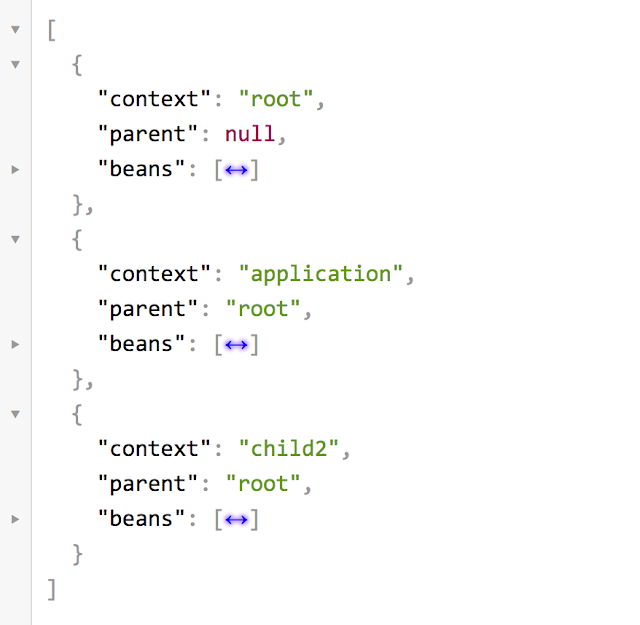Spring Boot and Application Context Hierarchy
Creating your own application context hierarchy can allow you, should you need to, provide different ports with different endpoints to give you some customization.
Join the DZone community and get the full member experience.
Join For FreeSpring Boot supports a simple way of specifying a Spring application context hierarchy.
This post is simply demonstrating this feature — I have yet to find a good use of it in the projects I have worked on. Spring Cloud uses this feature for creating a bootstrap context where properties are loaded up, if required, from an external configuration server, which is made available to the main application context later on.
To quickly take a step back — a Spring Application Context manages the lifecycle of all the beans registered with it. Application Context hierarchies provide a way to reuse beans — beans defined in the parent context are accessible in the child contexts.
Consider a contrived use-case of using multiple application contexts and the application context hierarchy — this is to provide two different ports with a different set of endpoints at each of these ports.
Child1 and Child2 are typical Spring Boot Applications, along these lines:
package child1;
import org.springframework.beans.factory.annotation.Value;
import org.springframework.boot.autoconfigure.SpringBootApplication;
import org.springframework.context.annotation.Bean;
import org.springframework.context.annotation.PropertySource;
import root.RootBean;
@SpringBootApplication
@PropertySource("classpath:/child1.properties")
public class ChildContext1 {
@Bean
public ChildBean1 childBean(RootBean rootBean,
@Value("${root.property}") String someProperty)
{
return new ChildBean1(rootBean, someProperty);
}
}Each of the applications resides in its own root package to avoid collisions when scanning for beans. Note that the bean in the child contexts depends on a bean that is expected to come from the root context.
The port to listen on is provided as properties, since the two contexts are expected to listen on different ports I have explicitly specified the property file to load with a content along these lines:
|
Given this setup, Spring Boot provides a fluid interface to load up the root context and the two child contexts:
SpringApplicationBuilder appBuilder =
new
SpringApplicationBuilder()
.parent(RootContext.class)
.child(ChildContext1.class)
.sibling(ChildContext2.class);
ConfigurableApplicationContext applicationContext = appBuilder.run();The application context returned by the SpringBootApplicationBuilder appears to be the final one in the chain, defined via ChildContext2 above.
If the application is now started up, there would be a root context with two different child contexts, each exposing an endpoint via a different port. A visualization via the /beans actuator endpoint shows this:
Not everything is clean, though. There are errors displayed in the console related to exporting JMX endpoints, however, these are informational and don't appear to affect the start-up.
Samples are available in my GitHub repo.
Published at DZone with permission of Biju Kunjummen, DZone MVB. See the original article here.
Opinions expressed by DZone contributors are their own.



Comments